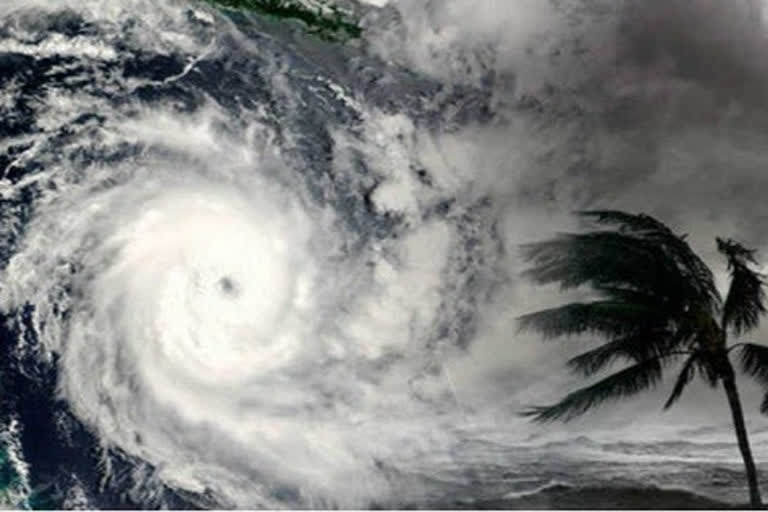Hyderabad: Union Minister of Science and Technology Harsh Vardhan informed that the number of cyclones forming on the Bay of Bengal side of the Indian subcontinent is decreasing and those on the Arabian Sea are showing an increasing trend and likewise the number of those making a landfall.
"The coastal vulnerability to the categories of Extremely Severe Cyclones’ or more continues over the Bay of Bengal region, as there is no significant trend in the frequency of Extremely Severe Cyclonic Storms (ESCS). On the other hand, the increase in frequency over the Arabian Sea has not posed a corresponding increase in the coastal vulnerability along the west coast since most of such Cyclones forming over the Arabian Sea are making landfall over the coasts of Oman, Yemen etc and hence the threat to Gujarat and Maharashtra coasts remains same," the minister informed in Lok Sabha on Friday
"On average, out of 5 Cyclones developing over the North Indian Ocean (NIO) comprising the Bay of Bengal and the Arabian Sea, about 3 to 4 of them make landfall causing loss of life and property. Low lying coastal belts of West Bengal, Odisha, Andhra Pradesh and Tamil Nadu and Puducherry are more prone to the impact of these systems," he said.
"The number of deaths due to cyclones has decreased significantly, as a result of the improvement in the early warning skill by the India Meteorological Department (IMD) under the Ministry of Earth Sciences (MoES) and effective mitigation measures and response actions by the National Disaster Management Authority (NDMA) and Ministry of Home Affairs (MHA). Still, there is a huge loss to property," he added.
It may be noted that greater vulnerability to tropical cyclone damage all over the world is mainly due to socio-economic and demographic factors. Improvements in warning systems and preparedness in disaster management remain critical to mitigating the loss of lives and, to some extent, loss of property.
| Year | Total Number Of Cyclones Formed Over The Bay Of Bengal & Arabian Sea | Number of Cyclones which made landfall over the Indian coast | Number of deaths reported |
| 2020 | 5 | 4 | 113 |
| 2019 | 8 | 2 | 105 |
| 2018 | 7 | 3 | 131 |
| 2017 | 3 | 0 | * |
| 2016 | 4 | 1 | 6 |
Some of the studies have highlighted the importance of land-use planning, development of coastal districts and insurance measures, in addition to the development of a vigilant disaster management system.
Based on the Global best practices, the risk management of the Cyclones depends on several factors including (i) hazard and vulnerability analysis, (ii) preparedness & planning, (iii) early warning services and (iv) prevention and mitigation.
The ‘early warning’ is a major component related to MoES/IMD targeting improved skill in monitoring and prediction and effective warning products generation. It is important to continuously upgrade all the components of early warning based on the latest technology for effective management of Tropical Cyclones.
IMD has taken a number of steps in recent years to continuously enhance the capabilities in monitoring, numerical modelling and forecasting of the hazards associated with cyclones. Thus IMD has demonstrated its capability to provide early warning for Cyclones with high precision.
Further, the Government of India has initiated the National Cyclone Risk Mitigation Project (NCRMP) with a view to addressing cyclone risks in the country. The overall objective of the project is to undertake suitable structural and non-structural measures to mitigate the effects of cyclones in the coastal states and UTs of India.
NDMA under the aegis of the Ministry of Home Affairs (MHA) is implementing the Project in coordination with participating State Governments and the National Institute for Disaster Management (NIDM). The Project has identified 13 cyclone-prone States and Union Territories (UTs), with varying levels of vulnerability.
ALSO READ: Cyclone Nivar weakens into 'severe cyclonic storm' category



